Right around dusk, the longtail ferry shoved off as the azure blue and indigo of the sky reflected on the Andaman Sea’s teal surface. It was one of the most calming scenes I’d ever been a part of — and we hadn’t even reached the island yet. After ten minutes or so, the engine began to sputter. We drifted to a stall.
For an hour, we sat in the boat and watched the driver wrestle with the engine. It chugged and cranked, but would not start. So a second boat came to tow us all the way to Ko Mook (or Muk), the “Pearl Island” of Trang province.
Seated on one of the benches that rim the wooden boat’s interior, I conversed with a young English teacher on a short getaway from Bangkok, and an elderly solo traveler from Germany taking her fifth visit to the island. Locals chatted, their sacks of onions and toys and rice piled among a few backpacks and suitcases.
Loading up the local ferry to Ko Mook at Kuan Thung Khu, the pier on mainland Trang province where my Thai island journey began nearly nine years ago.
I felt sorry for the boat driver, but thankful to be there. This was exactly the sort of open-ended slow travel that I’d spent the last several years working two bartending jobs to reach. I sat there on the orange bench, and soaked it in.
It was late October 2011. If you had asked me two months earlier, I would not have known about Ko Mook. I’d enjoyed a few days on Ko Samui during a previous trip, but most of my travels in Thailand up to that point had taken me upcountry. I was now heading to Ko Mook as part of my first-ever assignment for Travelfish. The first of many, as it would turn out.
The scene after arriving at Ko Mook’s Ao Kham Pier last year.
Though I didn’t know it during that late-afternoon ferry ride, my life was changing much faster than the boat was moving. Over the next few weeks, I hit nine islands in the Lower Thai Andaman — and became hooked. Since then I’ve returned to Ko Mook and nearby islands often, sometimes for work and other times to relax. I adore many Thai islands, but this one remains closest to my heart. Why?
Above all, the people
Travelers and islanders rarely pass each other without offering a smile, a nod, a “hello,” a “sawasdee” or a “salam-alaikum,” which is the proper way to greet a Muslim-Thai on Ko Mook and elsewhere in the country. Local kids often kick a ball around with the children of foreign visitors. It’s easy to make friends.
Getting the feet wet near the west end of Ao Kham, where most of the islanders live.
One day, my flipflop broke during the half-hour walk across the island. When the nearest shop didn’t have a pair in my size, the owner rode me around on his motorbike to a few other shops until we found some flips that fit me. He refused my offer of a little cash for the gas and his time, displaying the generosity that’s typical of this close-knit community. You can let your guard down on Ko Mook.
Strolling the village.
Most of the predominantly Muslim-Thai islanders dwell in stilted houses, some set amid rubber farms but most standing above seawater when the tide is up. Many of these attractive homes sport potted flowers and colorful laundry hung on the porches. A significant portion of the islanders do live in poverty, however, and the contrast between them and the well-heeled travelers can be stark.
Touching up the paint job on a longtail boat or rua hang yao.
Though it has grown steadily, Ko Mook’s tourism industry still runs at a low level. You’ll find no 7-elevens or big hotel chains. The first ATM arrived only a couple of years ago. Electricity is now ubiquitous, unlike on some low-key Thai islands like Ko Bulon and Ko Chang (Ranong). A few luxurious resorts are available, but in contrast to some of the nearby islands, Ko Mook has stuck to its budget roots.
Out of the house and into the boat.
In the early 2000s, only a few resorts were open, mostly on the west coast. By my first visit in 2011, several more had appeared on that side but only three were found to the east, where most of the islanders live near the only pier. Dozens of lodgings now dot both coasts and the villages in between, but most are wee bungalow spots with names like Coco, Lucky, and Cashew. For now, Ko Mook has struck a balance.
A native of Trang province, “Uncle” Mayow was one of the first to start a tourism business on Ko Mook in the 1990s. He remains a fixture.
I always look forward to catching up with Mayow and his family. They’ve been renting out a few huts and operating one of the best Thai restaurants on the island since the 1990s. Mayow’s good-hearted son, Mong, runs his own shack of a bar with a massage stand in a corner of Farang Beach. The family is close with the well-known Thai reggae singer, Job 2 Do, and his tunes feature prominently in the scorching reggae mix that thumps from Mong Bar day and night. Jam sessions are frequent.
A dry-season view from Mong Bar, my idea of heaven.
Another local star is Om, a perpetually shirtless bartender who learned to speak nearly flawless English over his years spent running Ting Tong Bar on the shady lane behind Farang Beach. He has a rare talent for carrying a party and turning patrons into real friends. In recent years he built Mountain View Bungalows on a hill beside Nature View, another budget resort owned by his cousin, Su. Both are fantastic.
The mostly sealed lanes are ideal for strolling and cycling. Motorbike rental is also available, though I usually look for a half-decent mountain bike to get me around.
I’ve also had many great experiences at Good Luck Restaurant, Sugar’s Cafe, Hilltop Restaurant, Coco Lodge, Garden Resort, and Nurse House, among others. The latter is another small budget resort, although the owner does work part-time in the village health clinic. He’s also a terrific host. (Check out the Travelfish guide to Ko Mook, last updated in 2019, for more recommendations on food, rooms and more.)
Built amid cashew, mango and coconut trees, the woven-bamboo bungalows at Coco Lodge were designed for maximum airflow. It was among the first resorts to appear near the village, and is still one of my favorites.
Then you have the foreigners, including many who return for extended stays every year or two. I reckon that these days, they’re longing for Ko Mook.
There’s a young Dutchman who speaks the Southern dialect with the same accent as the islanders; a middle-aged couple who always bring gifts from Michigan; an Italian hipster lady who loves to dance to the reggae; an old German sailor who comes ashore to chat after weeks alone at sea; a pot-bellied Finn who wobbles his bike around with a 22-ounce Chang beer in hand; and a Polish beauty with long golden hair who once sat and talked with me on the beach into the wee hours (sigh).
A motorbike taxi costs 50 baht per person for a lift across the island, or 100 baht if going solo. Unlike on some islands, you don’t have to worry about being overcharged by the drivers on Ko Mook.
Hang around, and you’ll be treated to some unforgettable stories on Ko Mook. Here’s a taste: Mong once told me about a pair of cobras that slithered down to Farang Beach to mate during one of the busiest weeks of the year, right in front of everyone. They went for a swim afterwards, oblivious to the parents who went shrieking into the water to fetch their little ones. As you can imagine, it was quite a scene.
Hat Farang is one of my favorite swimming spots in the Trang islands.
The island is a beauty
Though it only covers around eight square km of terrain, Ko Mook has most of the topographies that typify the Thai Andaman region. To the west, the nearly white sand of Farang Beach (aka Charlie Beach or Sai Yao Beach) lies within kayaking distance of limestone massifs that rise vertically above the coast. A little further east, a mangrove forest extends to the muddy shore of Panka Bay.
A late-afternoon walk with some rain on the horizon at Ao Wua Nawn.
Rubber and coconut trees blanket rolling hills on much of the east side of the island. More beaches — like Ao Wua Nawn (“Sleeping Cow Bay”) and Ao Kham with its wing-like sandbar — rim the east coast and afford views to the impressive Pakmeng cliffs on the mainland. I love hiking west from Ao Kuan on a trail that pierces the western jungle, which is protected as part of Hat Chao Mai National park.
When I want some alone time, I head for Hat Lo Dung. It’s only accessible by boat or a foot trail, which starts near Ao Kuan and cuts through the forest on the way to remote Hat Sabai.
While there’s not much coral off Ko Mook’s shores, reefs sprawl around the nearby islands of Ko Kradan and Ko Ngai. These three stunners form a triangle that makes for some fabulous island hopping by longtail boat, perhaps with stops for snorkeling at the specks of Ko Chueak and Ko Waen thrown in between them.
Longtail boat trips to nearby islands tend to be a little cheaper when booked on Ko Mook, as opposed to the generally pricier islands of Ko Kradan and Ko Ngai. The drivers can be a lot of fun as well.
Ko Mook also conceals one of the more extraordinary natural attractions found in all of the Thai islands: Tham Morakot or the “Emerald Cave.” It starts with a boat or kayak ride to the remote west coast, where an inconspicuous passage in the limestone beckons swimmers and kayakers inside when the tide is low enough. The sea cave quickly gets spooky, requiring a headlamp to cut the darkness.
A dark emerald shade catches the water as you swim deeper inside the cave, brightening as sunlight pulls you towards the end. There, in an enclosed ring of vertical karst cliffs, aquamarine water embraces a crescent of khaki sand backed by flora. Monkeys sometimes climb into this natural enclosure from above.
This video shows the advantage of arranging a trip to Tham Morakot locally. Just as the host entered the cave, a big package tour group was on its way out. (Source: Duncan’s Thai Kitchen)
The cave draws quite a few speedboat tours from Ko Lanta and Pakmeng to go with smaller groups from Ko Kradan, Ko Ngai and Ko Libong. The best place to arrange a trip is Ko Mook itself, where the longtail drivers know when to avoid the crowds. On one visit, myself and my companion had the whole Emerald Cave to ourselves.
When the tsunami hit on December 26th, 2004, a Scandinavian tourist sadly lost her life while swimming through the Emerald Cave. This was the only death recorded on Ko Mook, but the surging sea toppled many houses and bungalows.
Never forget.
No place is perfect
Of course, Ko Mook does have its problems. Erosion has advanced steadily along the northeast coast in recent years, prompting the upscale Sivalai Resort to build a seawall around part of its property. Erosion is a major concern throughout coastal Thailand, but on Ko Mook’s Ao Kham it seems to be moving particularly fast. On the other side of the island, Farang Beach looked wider than ever when I last visited.
Five years ago, Sivalai still had a wide expanse of powdery white sand out front. These days, the sea would be splashing inside the resort’s restaurant if it weren’t for the containment wall.
Then there’s Charlie, a 2004-built midrange resort that was shut down in 2018 after the government decided it was encroaching on national park land. (Its neighbor, Sawaddee Resort, was allowed to stay open.) What’s left of Charlie’s once-popular villas and swimming pool now sit derelict behind Farang Beach, upsetting formerly loyal patrons and forming an eye soar for visitors. I was told the closure had to do with a “red shirt and yellow shirt thing.” I hope to dig deeper into it down the road.
What’s left of the swimming pool at Charlie Resort, where I stayed on my first and fourth trips to the island.
Ko Mook has also yet to institute sound rubbish management, and trash is often burned or discarded along the roadsides. As with virtually all islands in Southeast Asia, this one gets its share of tidal garbage as well. That problem is far larger than any single island, but I do hope to see proper garbage incinerators installed on Ko Mook soon. Nearby Ko Libong already has a few of them.
There is a spot
I think that now is a good time to reflect on how the destinations we love have changed us or even altered the course of our lives — and how our visits impacted the people in those places. Nearly a decade and more than 70 Thai island visits after drifting on that broken-down ferry, I still think of Ko Mook as island #1.
A place to relax and reflect.
In fact, the only destination that I love more than Ko Mook is Vermilion, a small town on Lake Erie to the west of Cleveland, Ohio. (Bet you didn’t see that coming.) Every year when I was a kid, my family — dog and all — crammed into our blue 1987 Toyota Corolla to make the 12-hour drive from our home in Western Massachusetts to a little white cottage in Vermilion, which my late great grandparents bought in the 1950s. It’s still in the family, and we still gather there whenever possible.
Paying the mermaid a visit.
In early 2015, I brought my Mum to Ko Mook during her first-ever trip to Thailand. We paddled to a hidden beach marked by a mermaid image that watches over the fishers. There we sat back and recollected my father, who had passed away six months earlier. Though he never made it to Thailand, his kindness would have fit in perfectly on Ko Mook. I think of him and Mum every time I go back.
For me, as with “The Cottage” in Ohio, Ko Mook does not only exist on the map or in my memories. I can also find it in my heart. Where is that place for you? 🌴
Thanks for reading Thai Island Times, an independent, reader-supported newsletter sharing the beauty, challenges and distinctive identities of Thai islands and coastal areas.

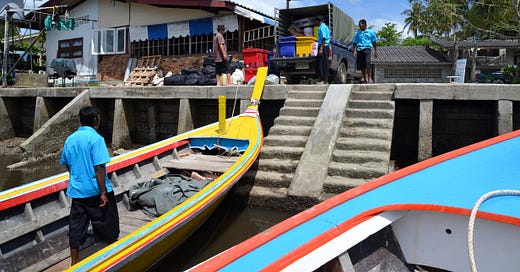



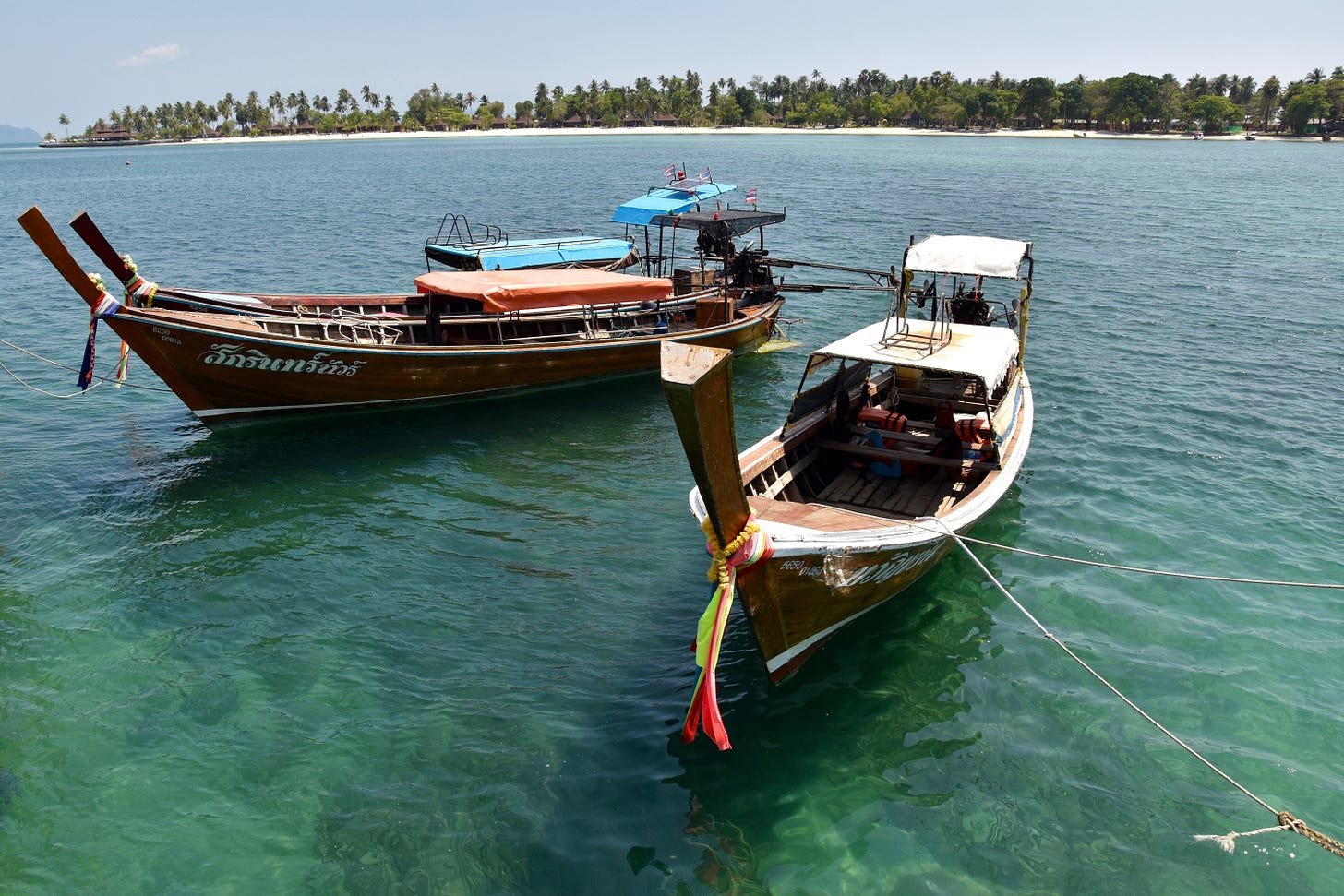
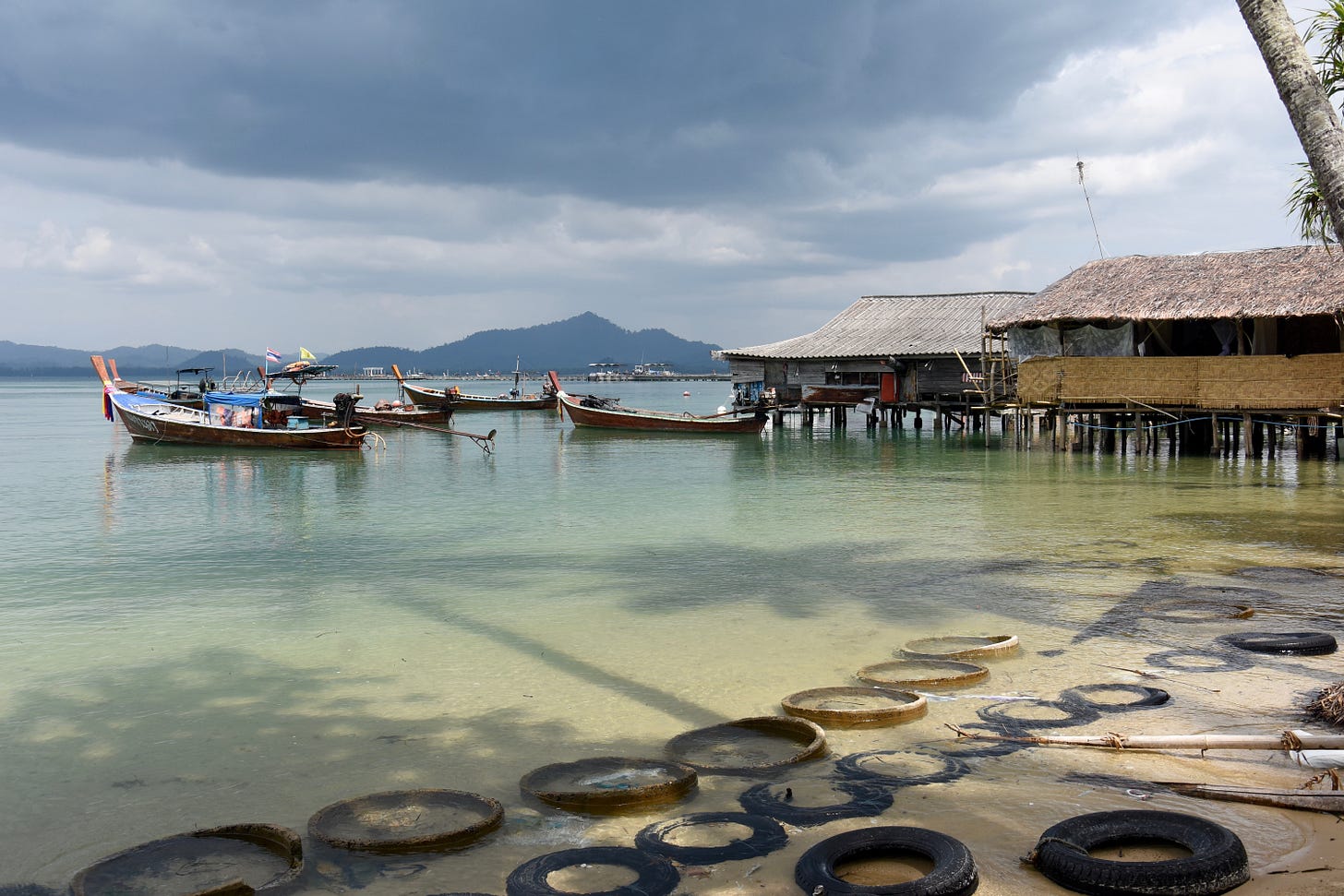
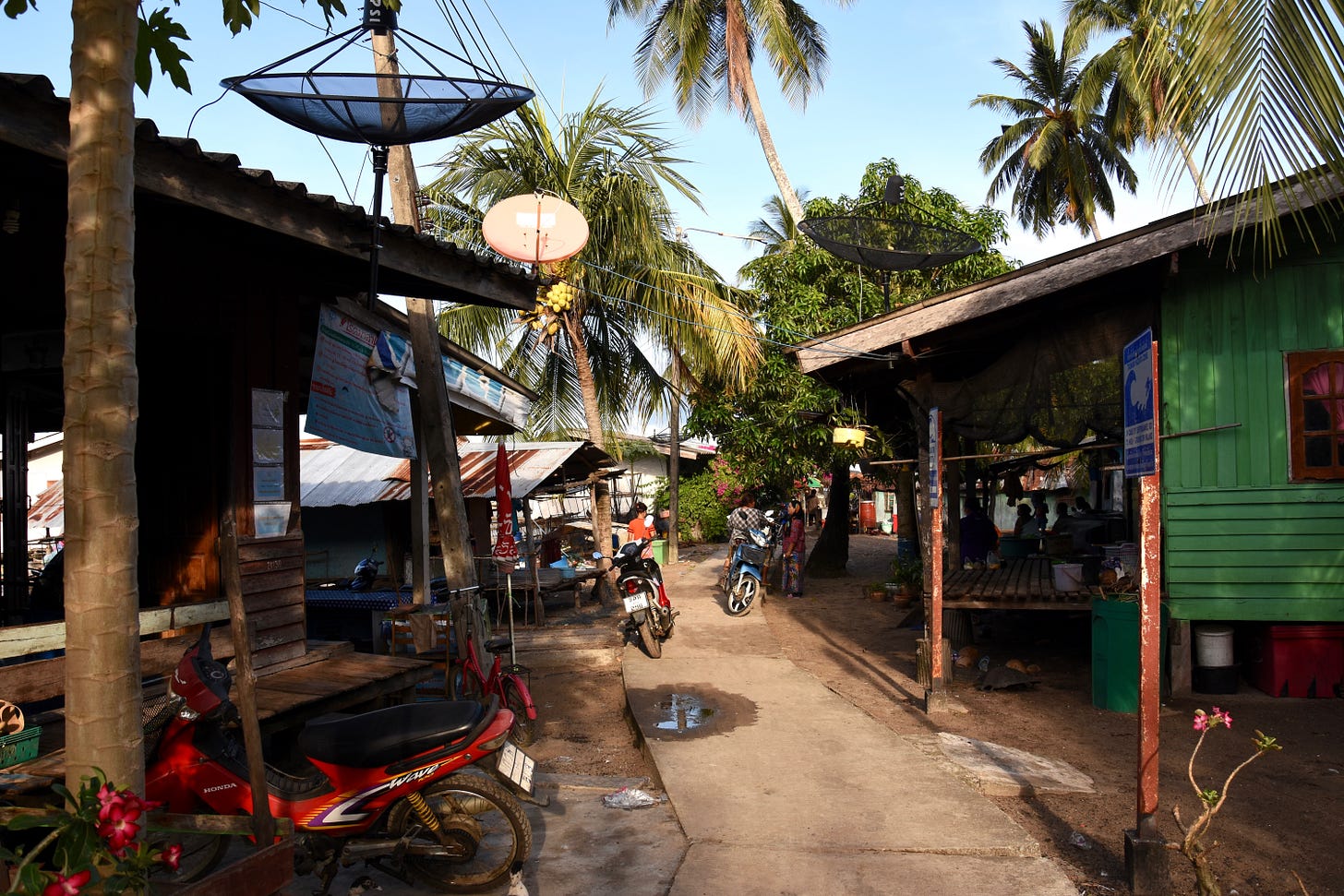
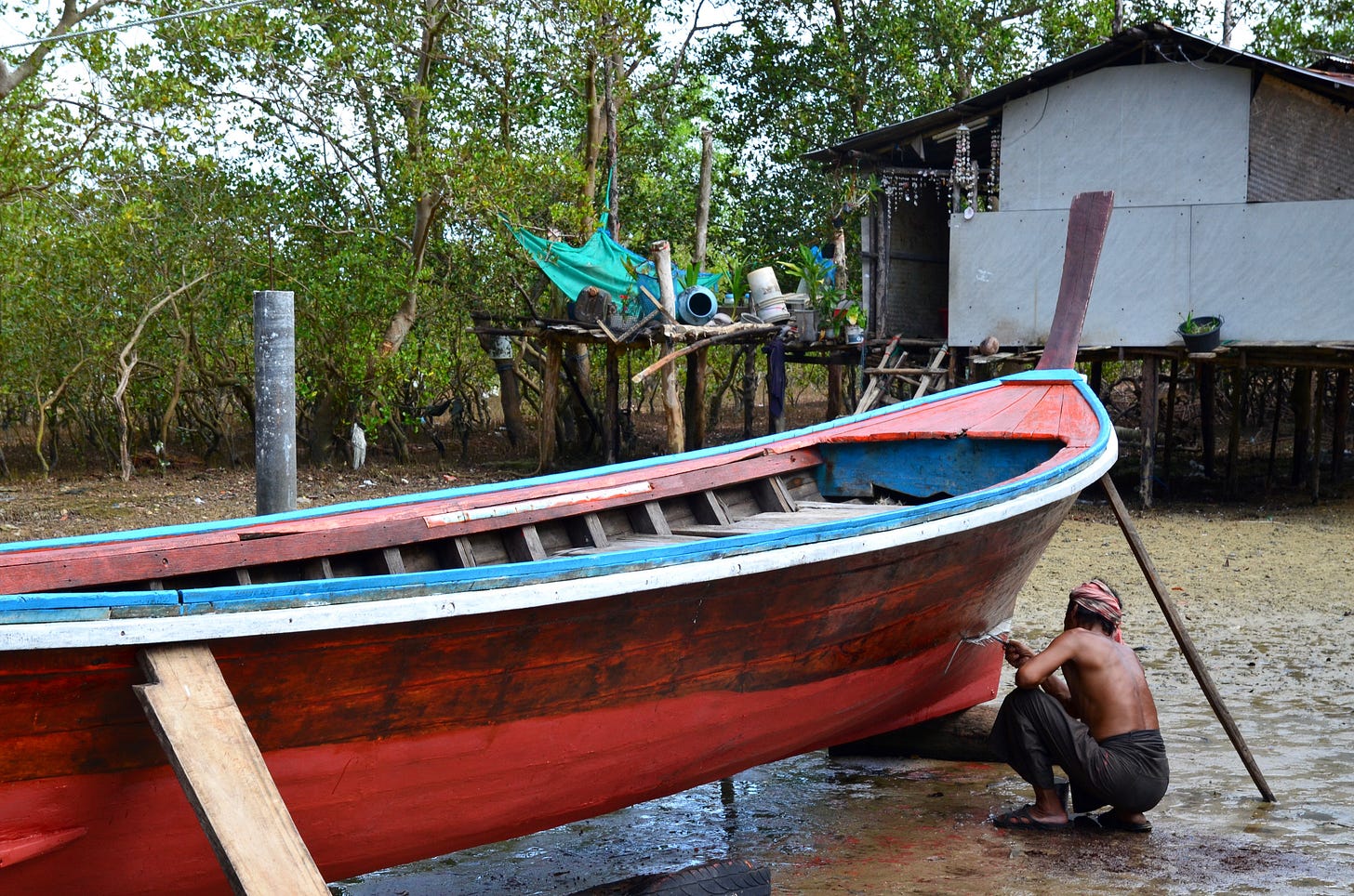
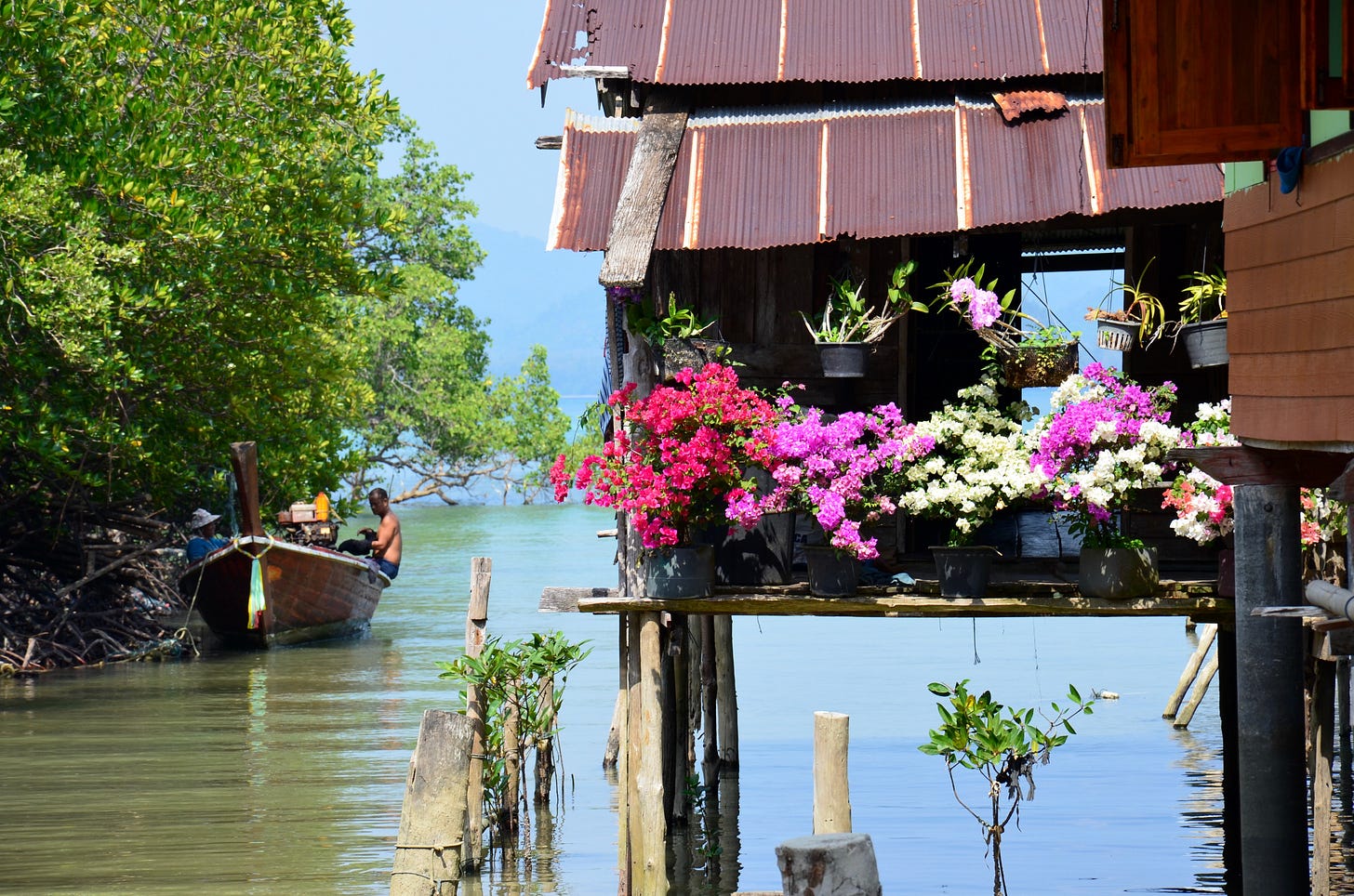
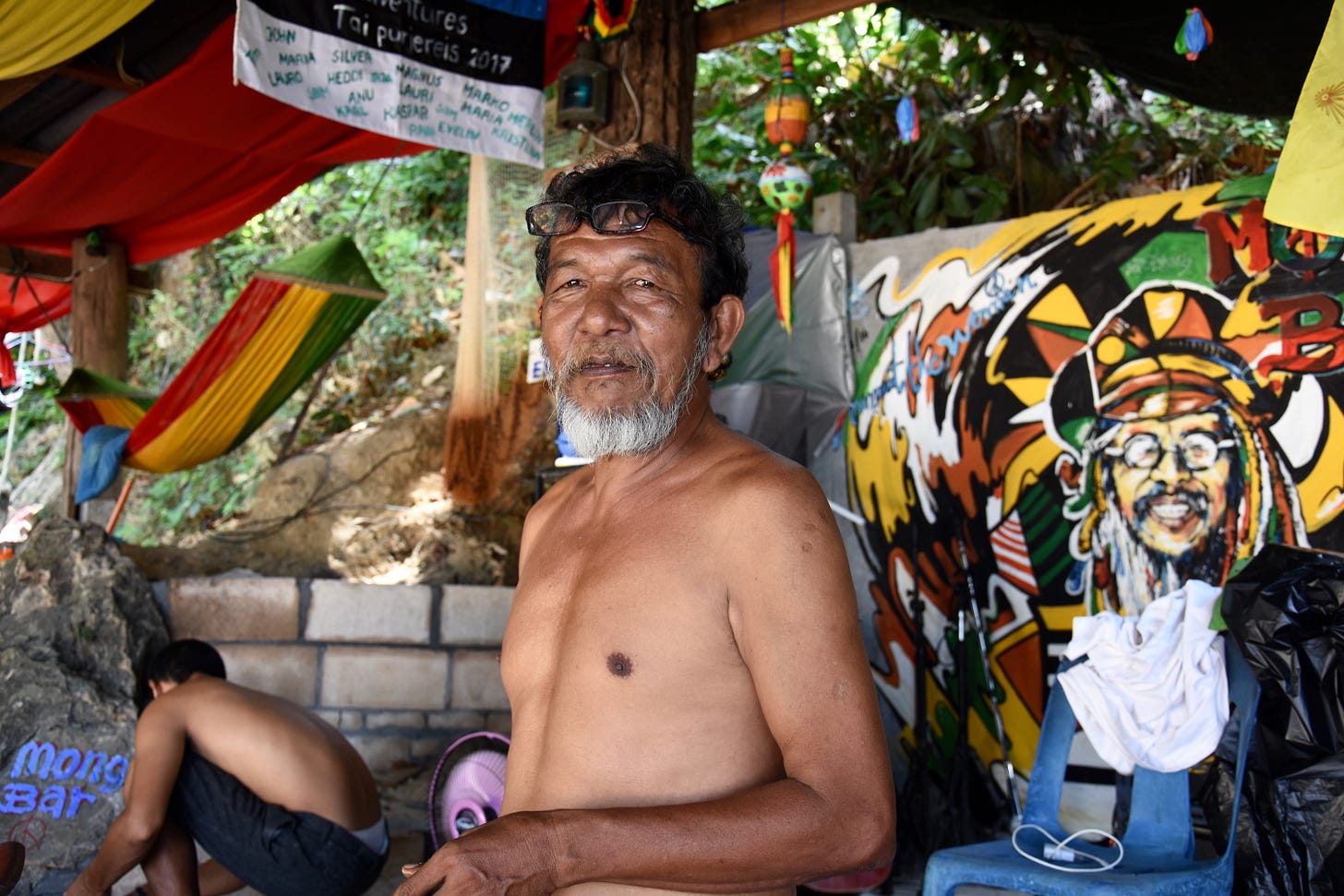
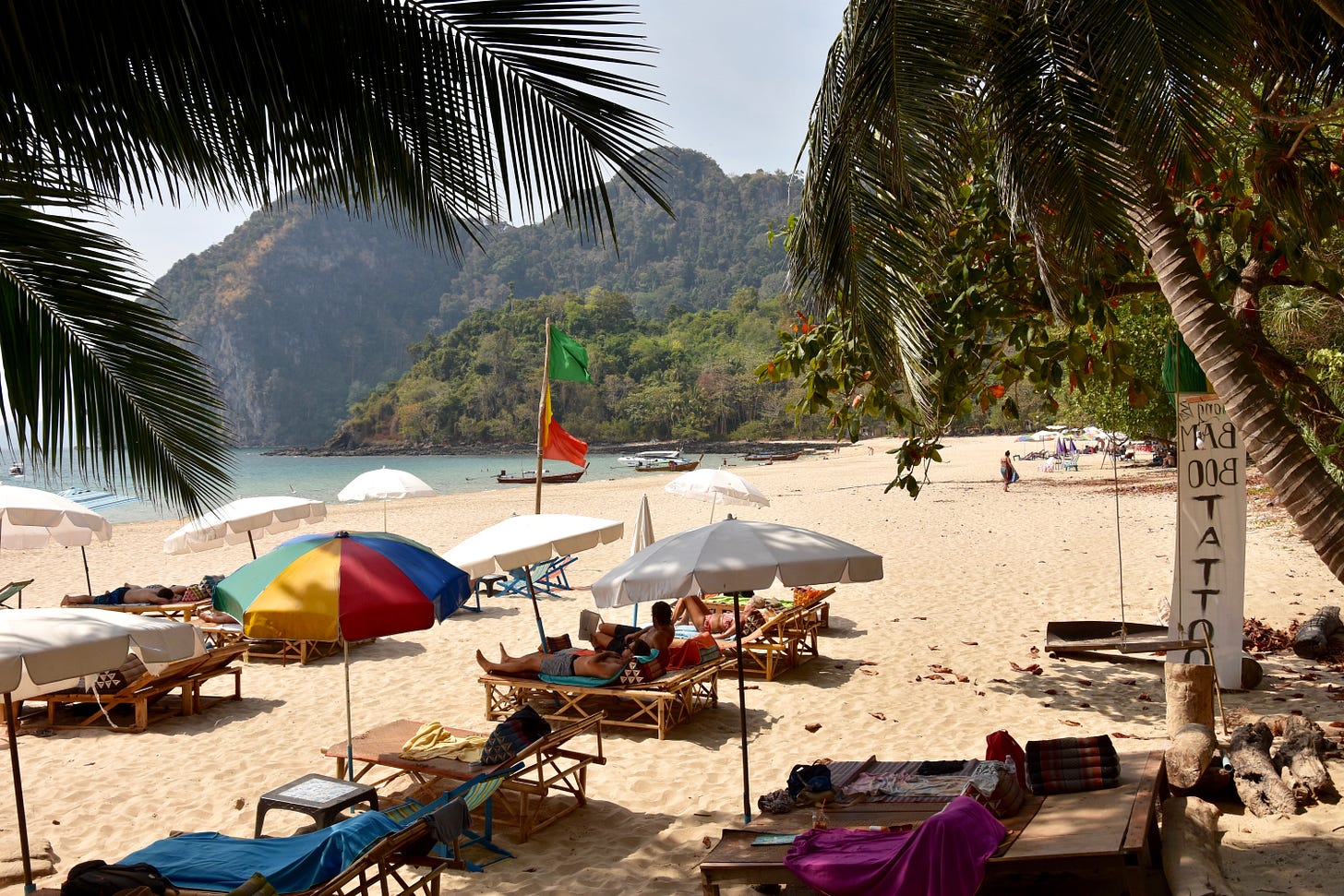
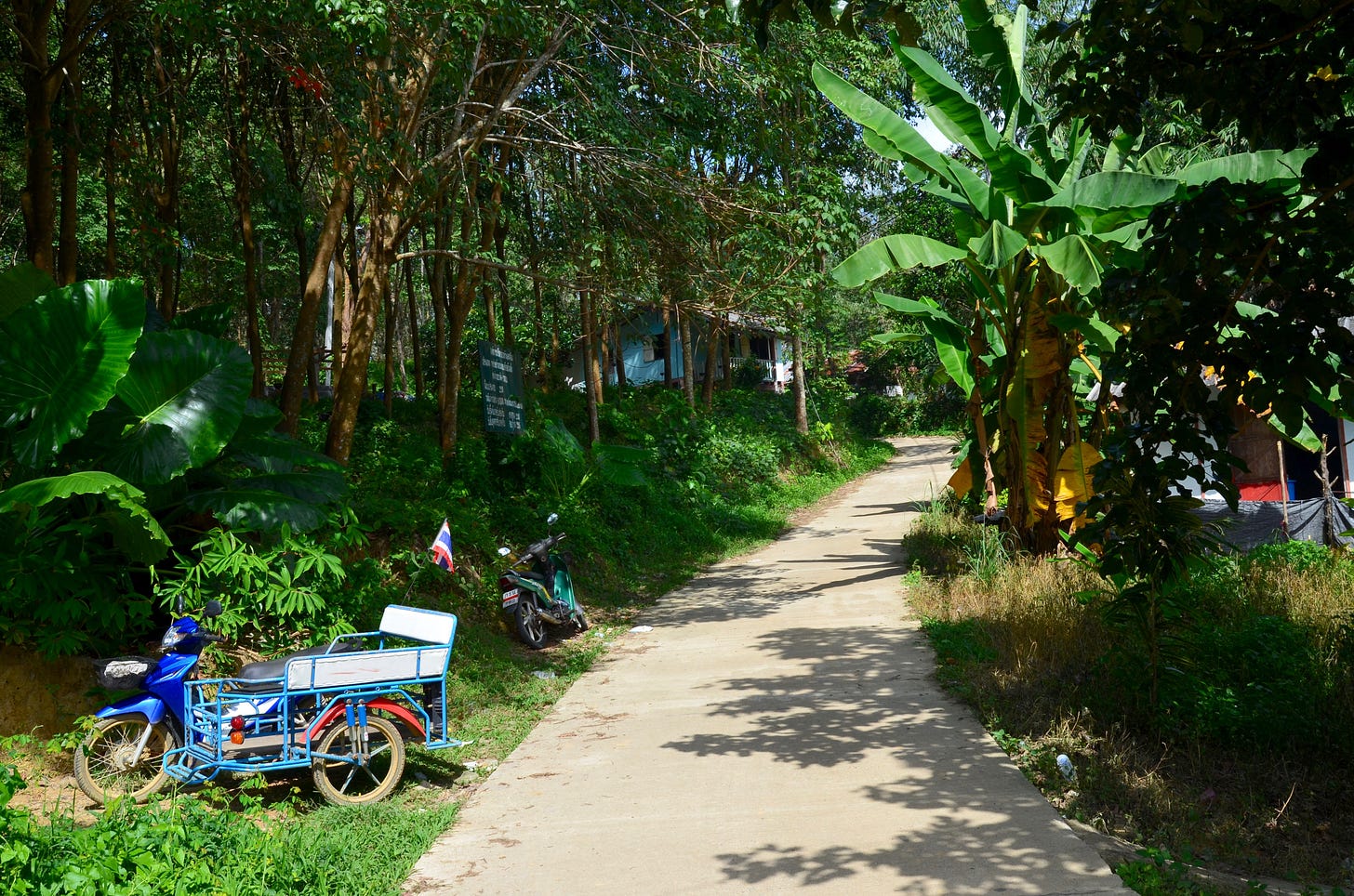

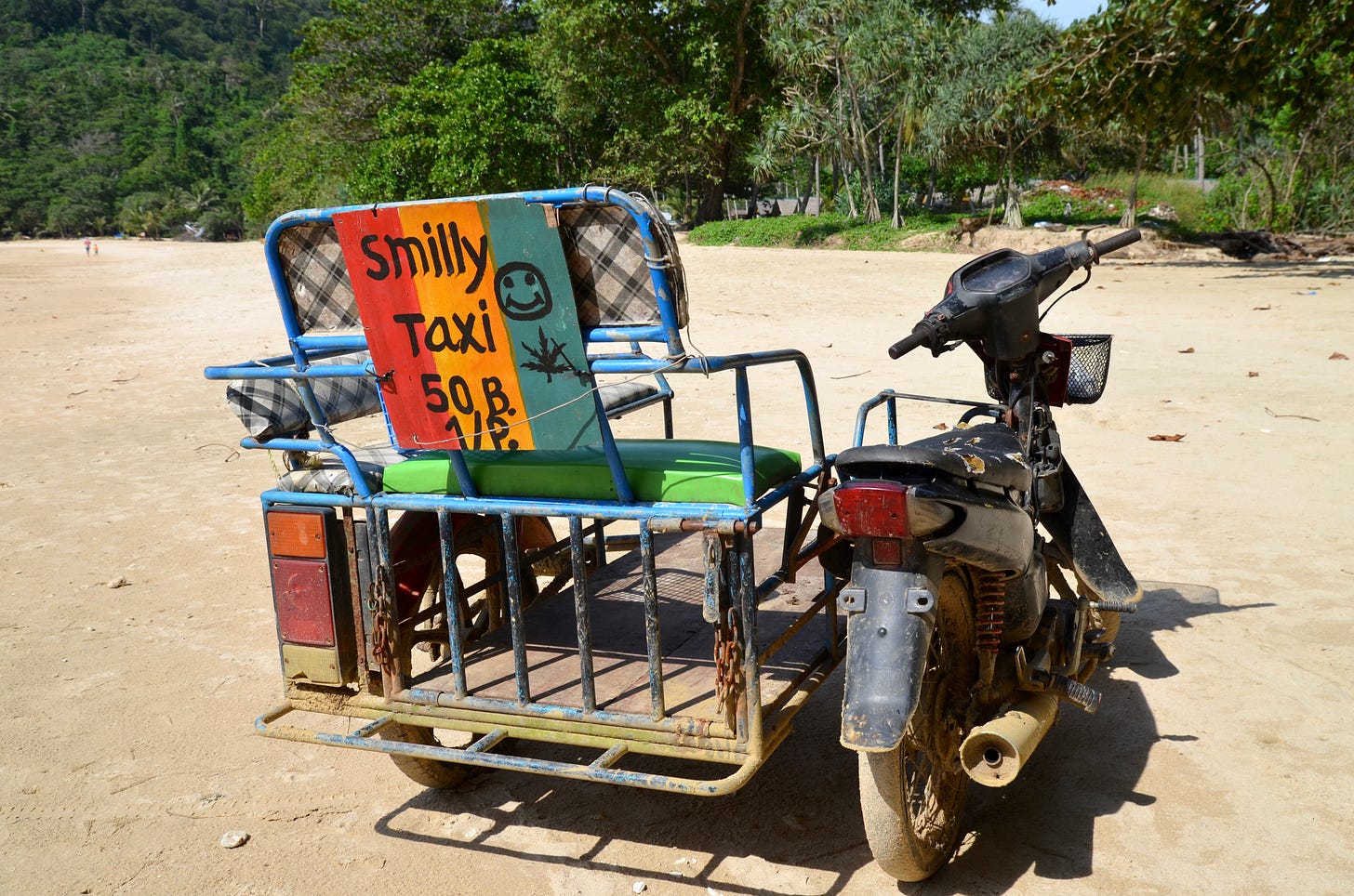
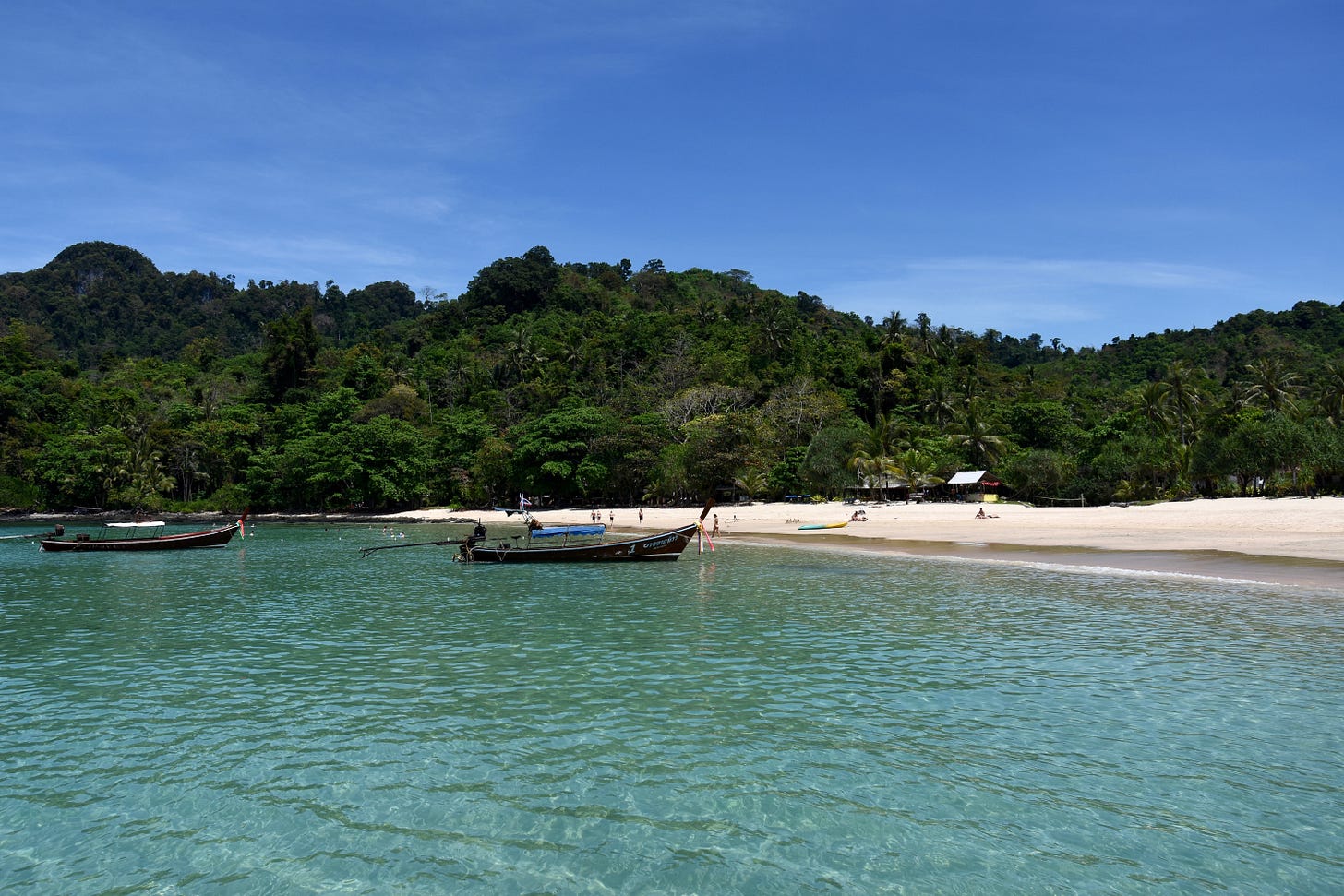
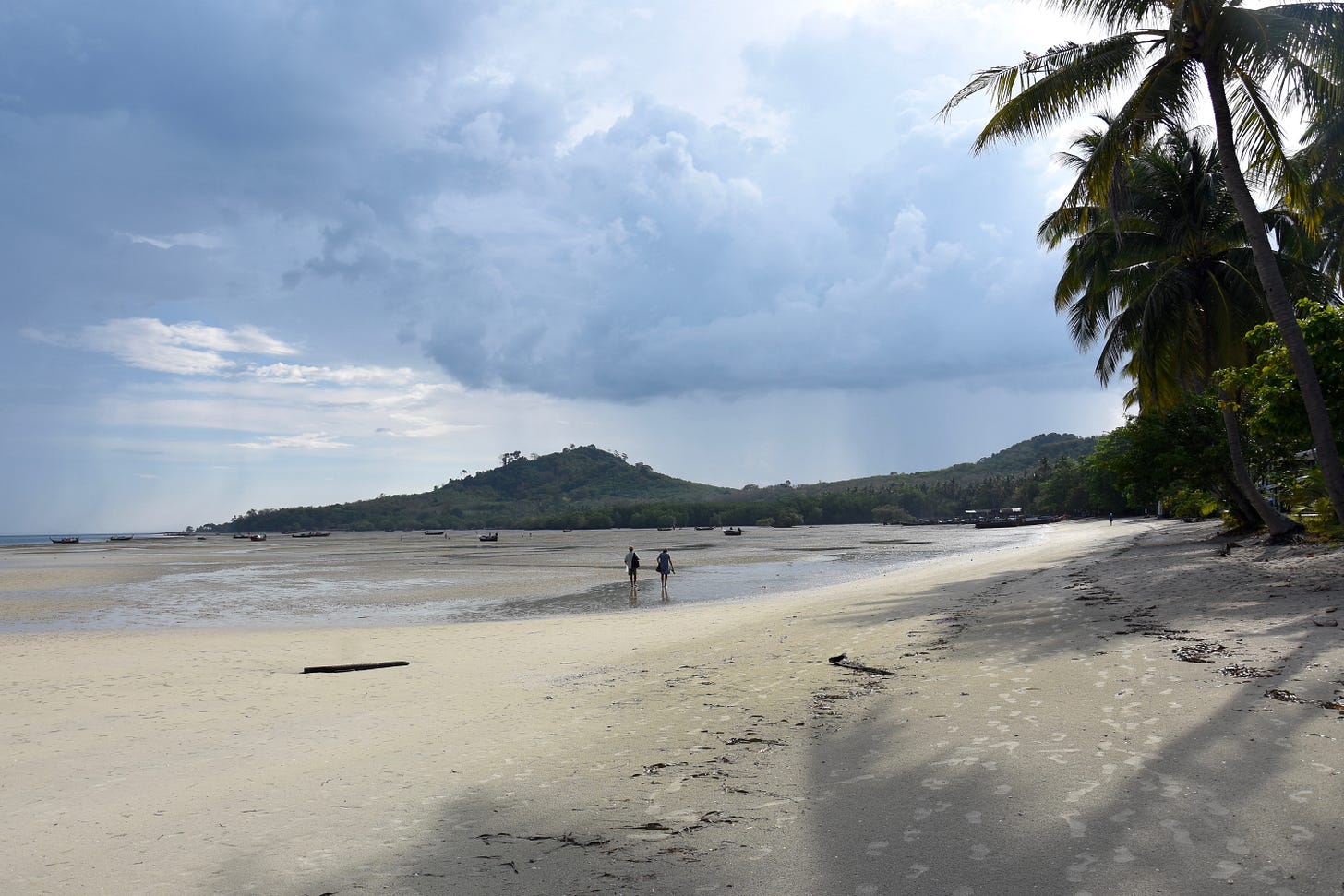
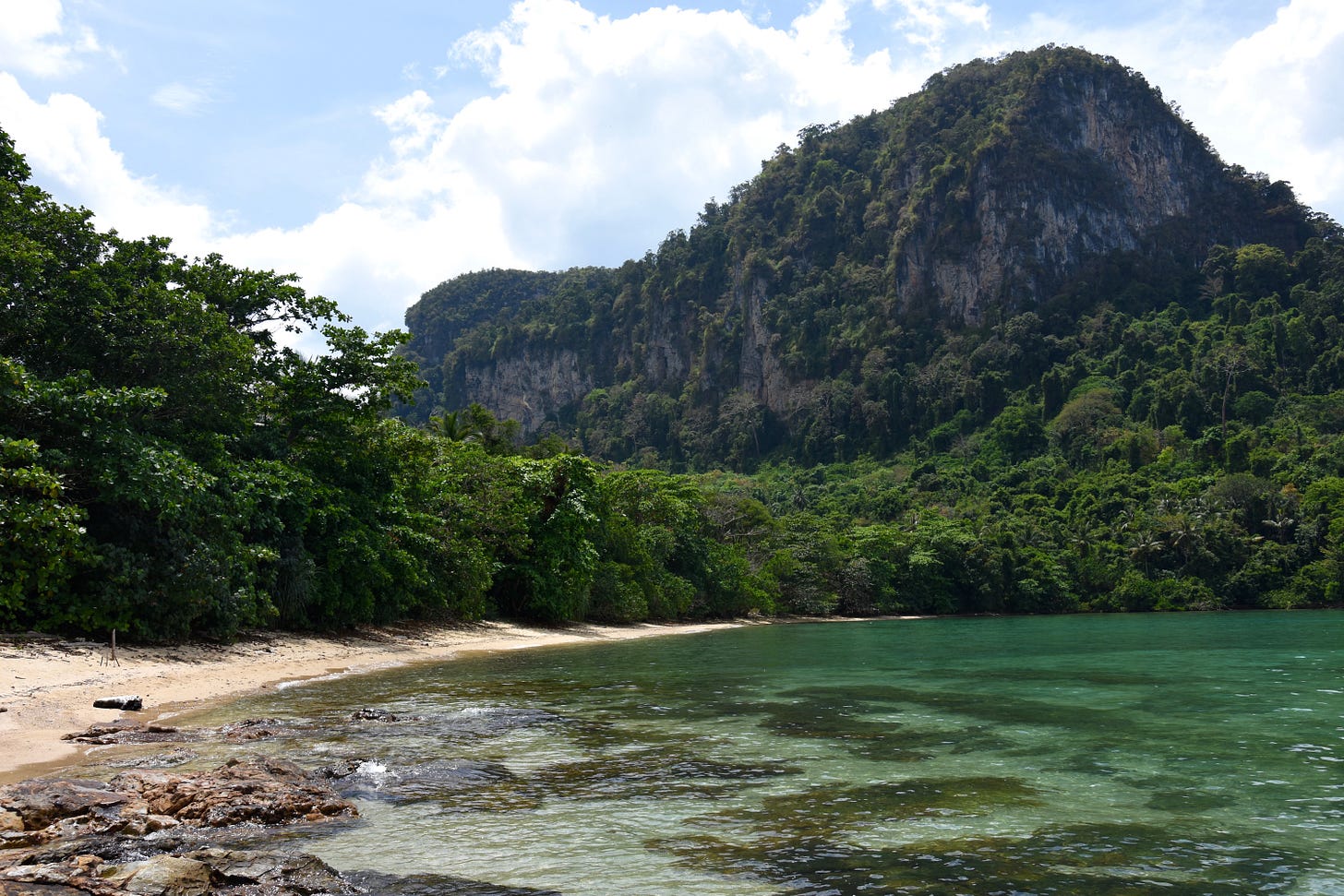

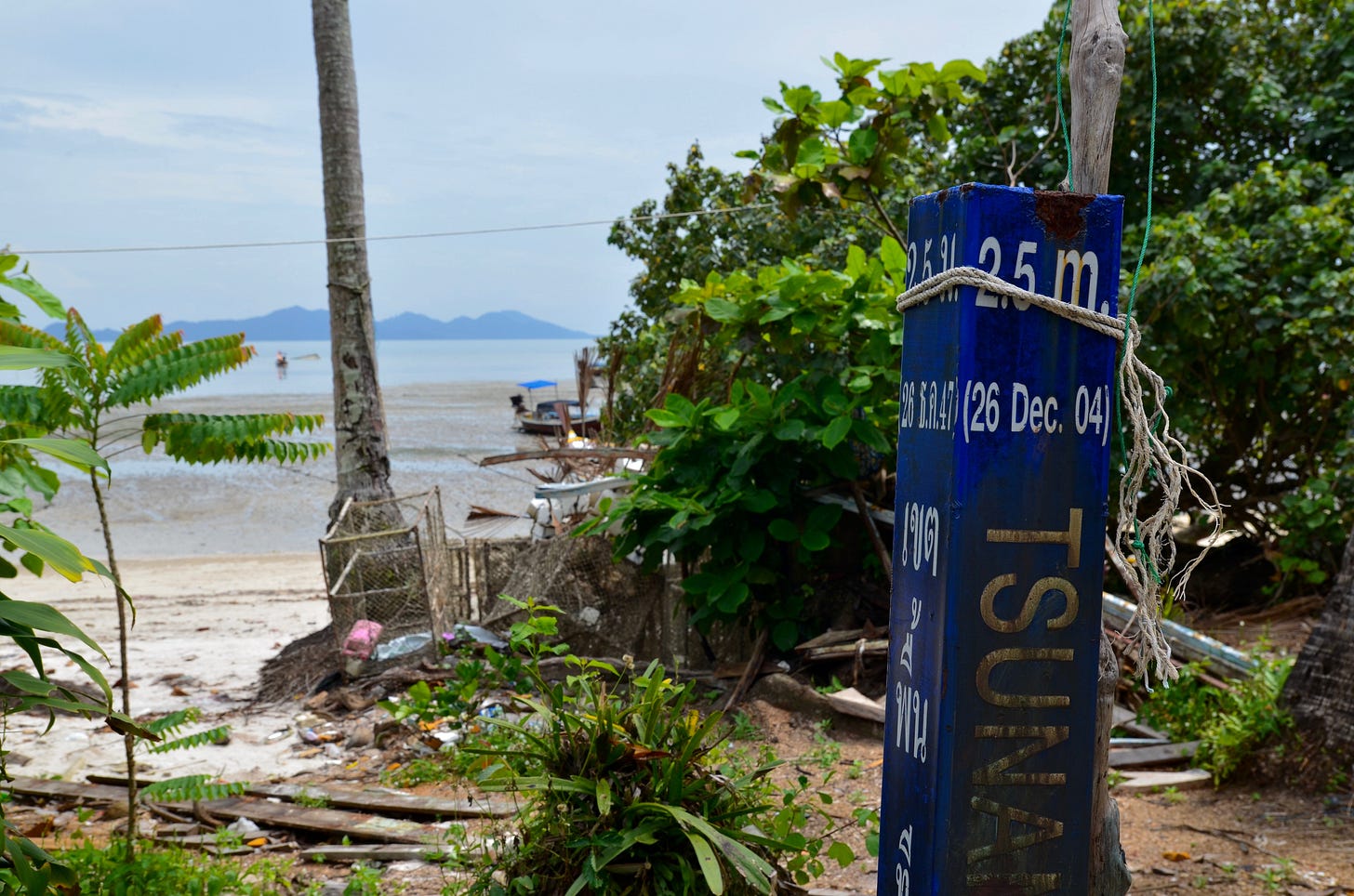
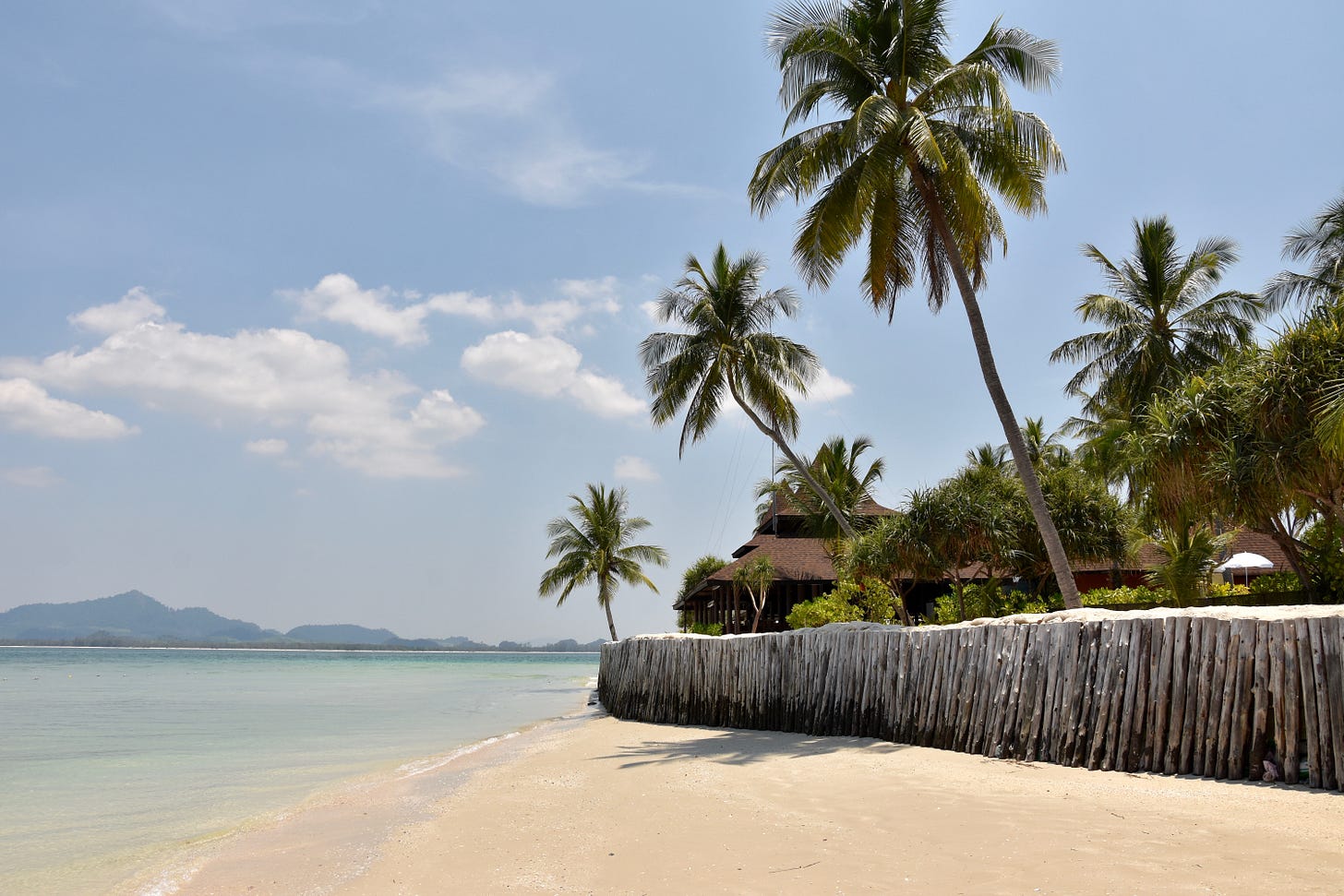
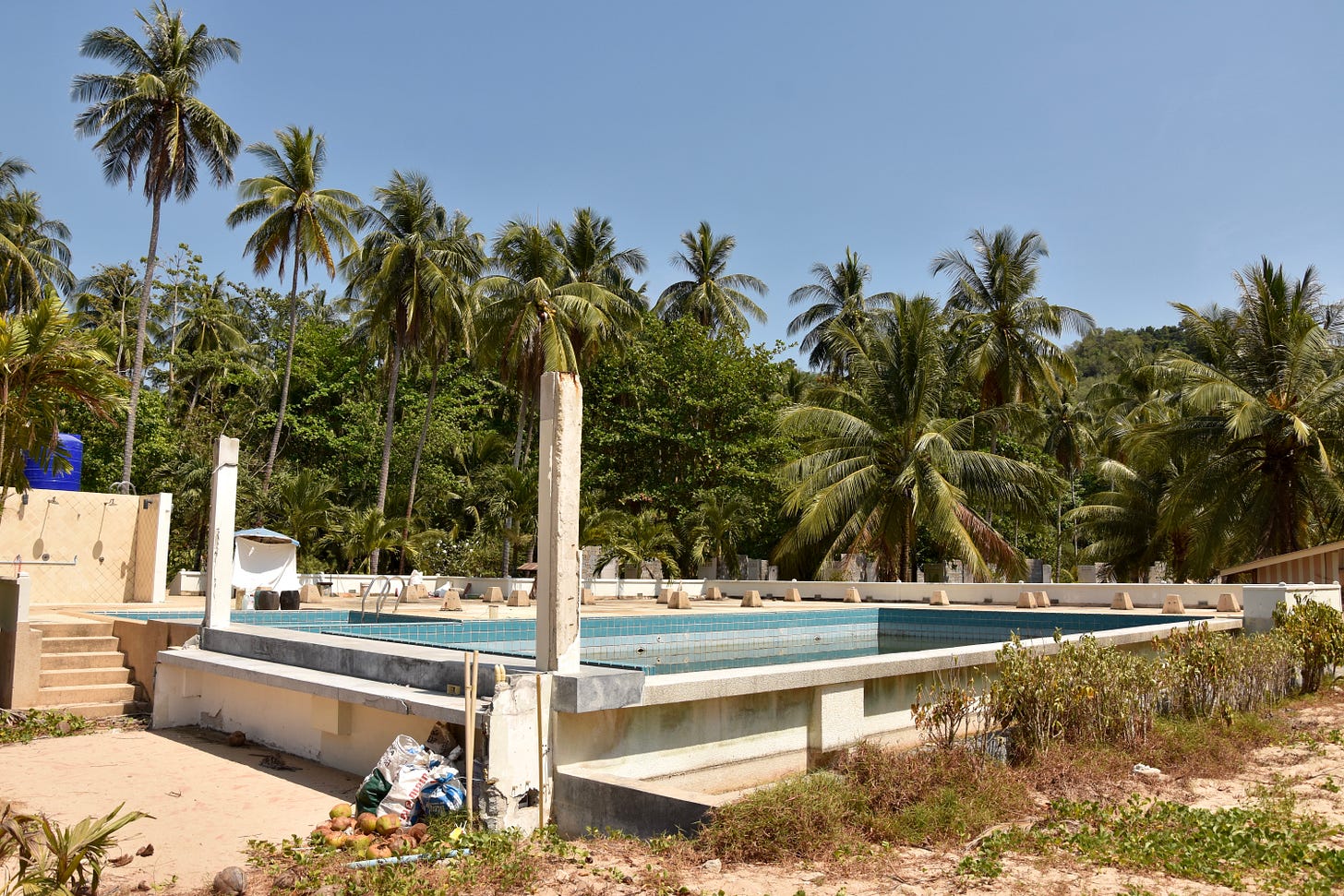
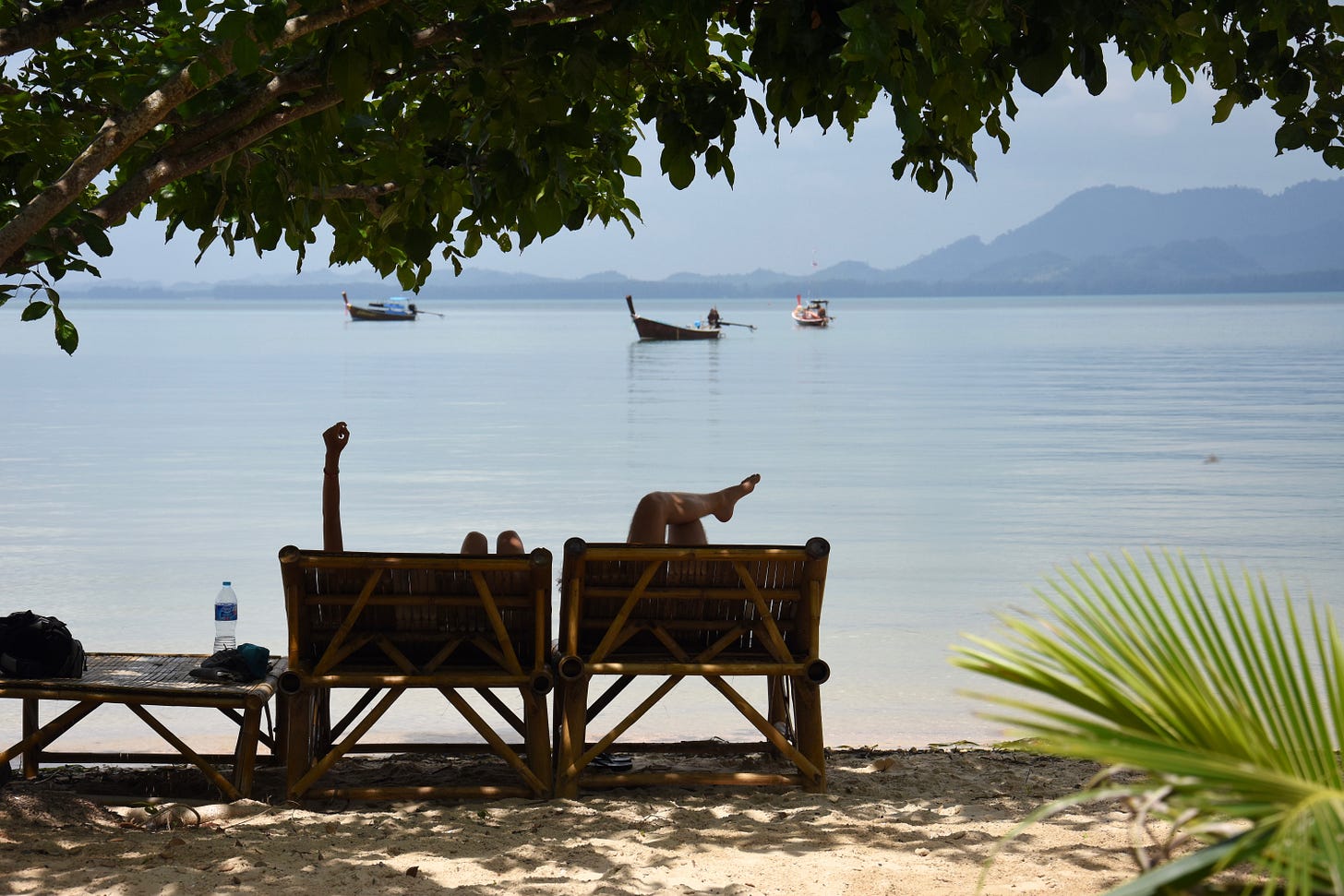
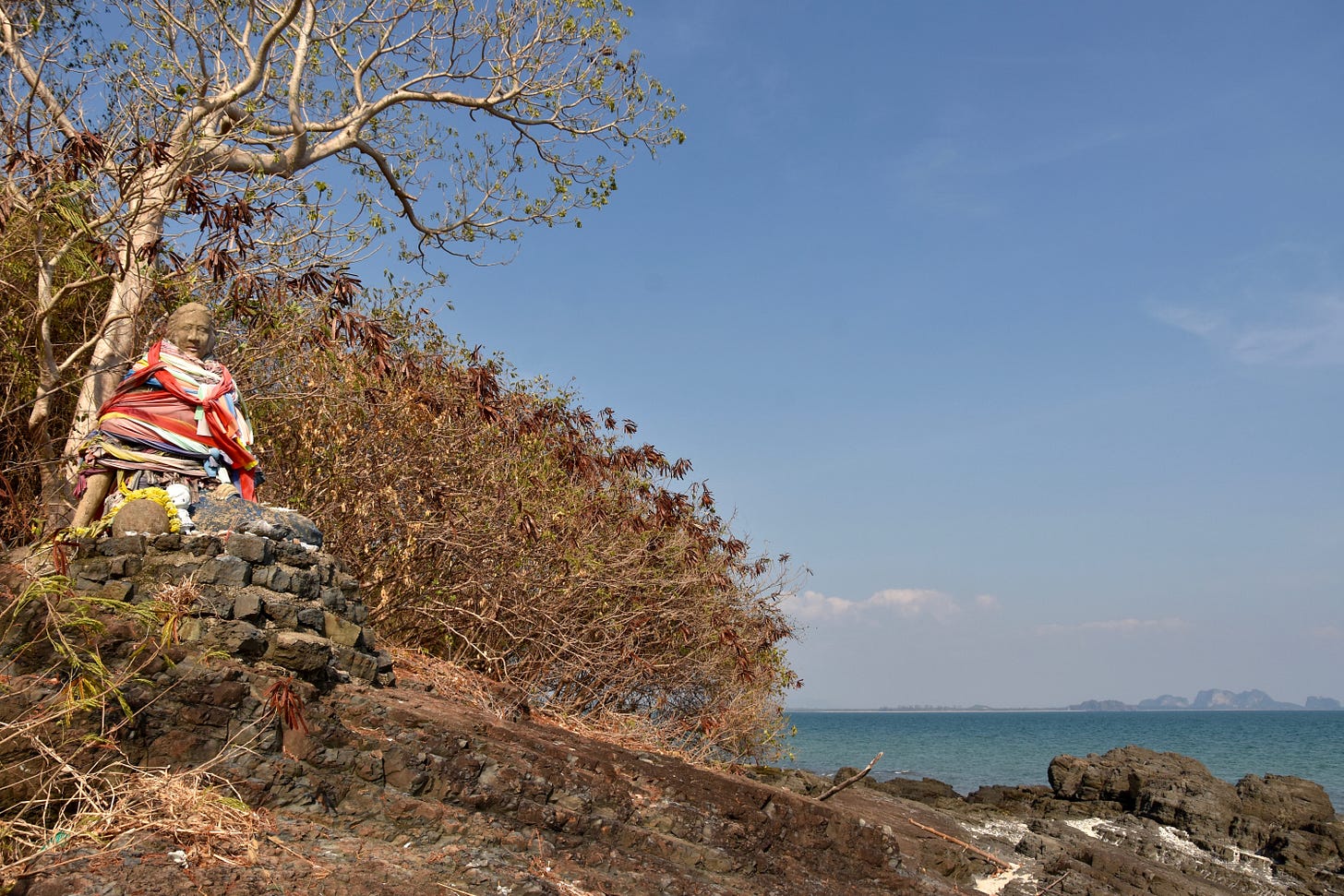
Beautifully written and informative. I do wish I came across this a couple of years ago when it was written. I'm looking forward to my first visit to the southern Andaman Sea Islands. I figure I'll explore around the area for a month or so before moving on to Langkawi. Wish I could bring you asking as a guide. Cheers and safe travels.
Ah yes, I know it well. and reading your article has invoked fond memories. Once I escape the UK (after being stranded here for 5 months now), Ko Mook and Ko Kradang are both on my list of "first things to do..." Again, thanks for the fond memories. Keep up the good work....